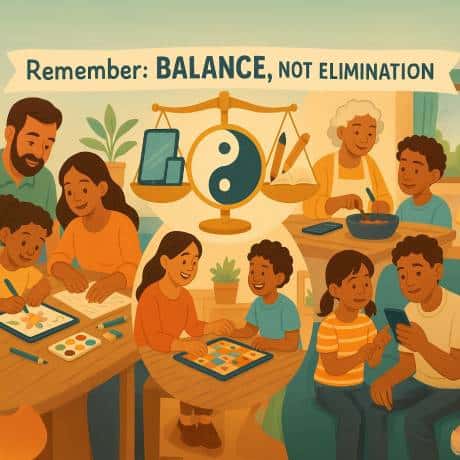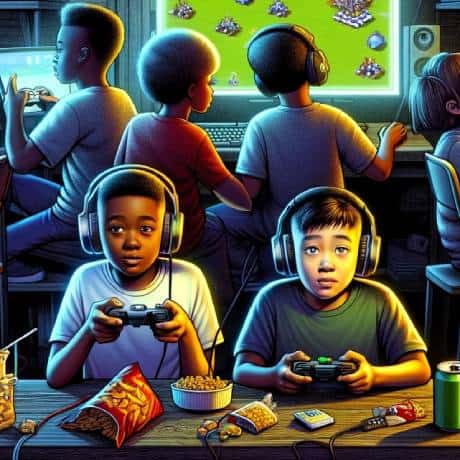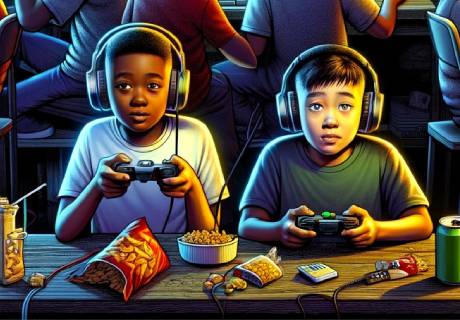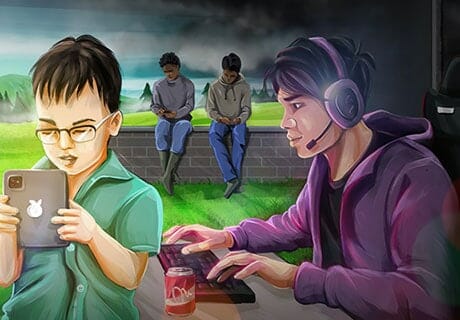Kids’ Health and Technology: Navigating the Digital Landscape
Author:
 |
Lionel Thomas Father, Gamer and Founder with a Passion for Health, AI, Environment and Gamification of Life. |
Author Tools:
- Grammarly (Spelling and Grammar)
- ChatGPT (Content Enhancements & Research)
- GSpeech (Audio by AI)
- Other Tools (AI)...
Artists:
References:
-
Screen Time Guidelines
American Academy of Pediatrics (AAP) guidelines on screen time
https://www.aap.org/en/patient-care/medi...
Summary:
This passage suggests that setting a specific limit on children's screen time is not necessarily the best approach for healthy technology use. The American Academy of Pediatrics recommends focusing on the quality of digital media interactions rather than the quantity. Parents and educators are encouraged to consider the activities that children and teens are engaged in online, with an emphasis on supporting activities that enhance their social, emotional, cognitive, and identity development.
-
Association Between Screen Time and Children's Performance on a Developmental Screening Test
National Library of Medicine
https://pubmed.ncbi.nlm.nih.gov/30688984...
Summary:
The researchers assessed children's screen time behavior and developmental outcom; The results showed that higher levels of screen time at 24 and 36 months were significantly linked to poorer performance on developmental screening tests at 36 months and 60 months, respectively.
The study concluded that there is a association between screen time and child development, supporting previous concerns about excessive screen time's potential negative impacts. The researchers suggest creating family media plans and managing screen time to mitigate potential negative effects.
-
Guidelines on physical activity, sedentary behaviour and sleep for children under 5 years of age
World Health Organization
https://apps.who.int/iris/handle/10665/3...
Summary:
The document outlines the guidelines for daily physical activity and sedentary time, specifically focusing on children under 5 years old. These guidelines, developed by the World Health Organization (WHO), aim to help national officials in their efforts to enhance physical activity, reduce sedentary periods, and improve sleep among young children.
Physical inactivity has been recognized as a major risk factor for global mortality and is contributing to the increasing prevalence of overweight and obesity. Early childhood is a crucial phase of rapid physical and cognitive development, where habits are formed and family lifestyle practices can be modified.
The guidelines provide advice on how a child's daily activity should be structured, considering different intensities of physical activity, sedentary time, and sleep. The recommendations aim to bridge a gap in WHO's prior physical activity recommendations, which did not include children under 5 years old.
-
Computer vision syndrome: a review of ocular causes and potential treatments
National Library of Medicine
https://pubmed.ncbi.nlm.nih.gov/21480937...
Summary:
Computer vision syndrome (CVS) is a set of eye and vision problems related to prolonged computer use, affecting between 64% and 90% of computer users. Symptoms include eyestrain, headaches, ocular discomfort, dry eye, diplopia, and blurred vision. The principal causes are thought to be oculomotor anomalies and dry eye. The responses to electronic screens are similar to viewing printed materials, but dry eye symptoms are more prevalent due to reduced blink rate and blink amplitude, and increased corneal exposure, especially when the monitor is in primary gaze. Despite proposed treatments, their effectiveness is yet to be proven. An improved understanding of the physiology of CVS is needed for more accurate diagnosis and treatment, to ultimately enhance visual comfort and efficiency during computer use.








 Snacks
Snacks Water
Water Eye Sight
Eye Sight Hearing
Hearing























 Screen Time
Screen Time Play Sports
Play Sports


